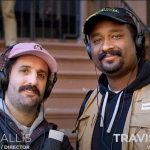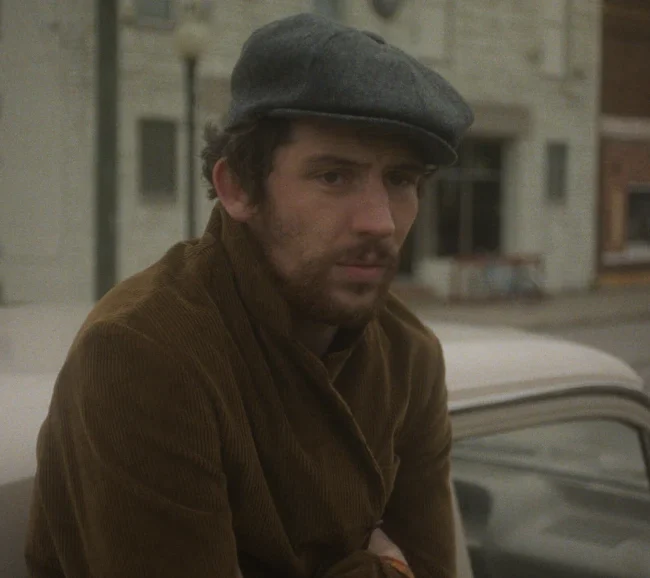THE TOP 25 FILMS OF THE DECADE (2000-2009)
Before we begin, let us acknowledge that when it comes to “best of” lists, this year has quickly devolved into that loud lush at the end of the bar who won’t stop yapping. Though we’ve already contributed to his enabling twice (see: the 2009 Hammer to Nail Awards and Filmmaker Reflections – The 2000s: Vols 1-7), we feel it is our duty to buy him one last round before we can kick him to the curb once and for all.
The first nine years of the 21st century ushered in an official digital revolution in independent filmmaking. Sparked by the improbable success of The Blair Witch Project, filmmakers began to fully embrace the more efficient—and affordable—technologies that were being presented to them at a breakneck pace. These startlingly high quality consumer-grade video cameras helped to level the playing field and allowed new voices to emerge. But this revolution wasn’t relegated to the indie sphere. By 2009, some of Hollywood’s most powerful figures—David Fincher, Michael Mann, Steven Soderbergh, David Lynch—had fully embraced a digital aesthetic. As we write this now, the Red camera appears to be dramatically changing the landscape once again. Who knows what will happen in the coming years, but if things keep moving in this direction, by the end of 2019, 35mm and 16mm will have gone the way of Super 8.
Which is funny when you consider the following list. As with our 2008 and 2009 Hammer to Nail Awards, we decided to separate ourselves from the pack by using a stricter guideline than most. We think this works in two ways: 1) It gives us a different purpose; and 2) It shines a valuable spotlight on work that otherwise might get lost in the shuffle. Eligible films include:
AMERICAN NARRATIVES THAT WERE PRODUCED FOR ONE MILLION DOLLARS OR LESS.
If you think 25 films seems like a large number for such a specific niche, let it be known that we could have made it a very worthwhile 50. On a subjective note, I’d like to say that, to my disappointment, a few of my own personal favorites did not make the cut. The same can be said for all of our contributors.
When it comes to those that did tally enough points, something immediately jumps out. Out of the first 24 films, only one was shot on video. While this certainly wasn’t a conscious choice, if anything, it speaks to the type of ambition that made us launch this site in the first place. That said, if we’re still doing this in 2019, I can pretty much guarantee that subsequent lists won’t be so celluloid-centric.
I won’t bore you with details of the voting process itself (if you’re interested, take a look at our 2009 Awards for an equivalent explanation). However, I do feel compelled to offer two notes of clarification to remind readers that we did our best to remove directly personal connections from the equation. Though that creates its own perhaps unfairly negative ramifications for some of these filmmakers and films, we ultimately decided that this was a more ethically sound approach to take. Here are those notes:
1. NO ONE WAS ALLOWED TO VOTE FOR A FILM IN WHICH THEY WERE CREDITED AS A CAST/CREW MEMBER.
2. TO NIP THIS POSSIBLE GRIPE IN THE BUD, AND AS AN EXAMPLE, I WOULD LIKE TO STATE THAT I, MICHAEL TULLY, DID NOT ATTRIBUTE ONE TINY POINT TO THE NUMBER 1 FILM. THIS ALSO APPLIES TO MIKE S. RYAN WITH REGARDS TO NUMBERS 8, 10, AND 24. ET CETERA.
One more quick point. In the case of ties, we opted against having any re-votes, simply assigning those films matching numbers and listing them alphabetically.
Okay, enough disclaiming. We’d like to congratulate and thank the following filmmakers for rising to the challenge, for depleting their own hearts, minds, and wallets, for defying the odds, to create such inspiring, moving works. For anyone who’s considering going to film school, I suggest a cheaper alternative: Buy these 25 films on DVD and study them closely. Many valuable lessons are contained within. — Michael Tully
HAMMER TO NAIL’S TOP 25 FILMS OF THE DECADE

25. Sita Sings the Blues (Nina Paley, 2008, 59 points)
On paper, Nina Paley’s animated spectacle sounds like a lesson in pretension, but in execution, it’s one of the more exhilarating and original motion pictures of this young century. In fusing the classic Indian myth Ramayana with the late-1920s vocal stylings of jazz singer Annette Hanshaw, Paley doesn’t just perform a creative personal exorcism of the pain inflicted upon her when her husband dumped her by email. Against all odds, Sita Sings the Blues soars as a poignant statement on the universality and timelessness of female suffering. Oh yeah, it also happens to be laugh-out-loud funny and an all around giddy delight. (MT) ***BUY IT ON DVD***
****************************************************************************************************************************************************************
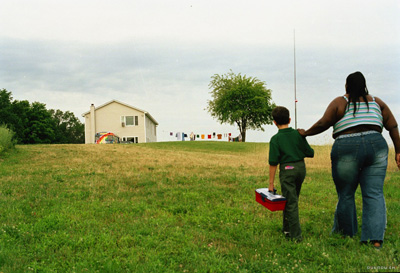
24. Palindromes (Todd Solondz, 2004, 62 points)
Todd Solondz’s films seem to be made from the head rather than the heart, but Palindromes has moments that so effectively sear themselves into your brain with their tender strangeness that you create your own emotional memories around them. Provocation and shock value aside, Palindromes conjures a fractured reflection of the innocence of a single child whose only desire is to make another child in her own image. As the name hypothesizes, this movie does turn out to be a compelling and uncanny puzzle. Is this one of the best films of the decade or just the most bizarre? In either case, it’s unforgettable and not to be missed. (Holly Herrick) ***BUY IT ON DVD***
****************************************************************************************************************************************************************
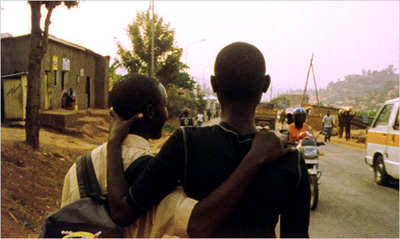
23. Munyurangabo (Lee Isaac Chung, 2007, 63 points)
Munyurangabo represents the decade’s finest example of a new type of emerging American independent cinema, one that eschews the regional and narrative conventions that have defined our movies for decades in favor of a creative and aesthetic engagement with the world beyond our national borders. In the case of the breathtaking Munyurangabo, this newfound engagement comes in the form of reconciliation with the ghosts of the Rwandan genocide, each given a voice in the native Kirwanda language. Every moment of Lee Issac Chung’s film is transformative, and as a narrative and a standard-bearer for filmmaking, Munyurangabo is the beginning of something powerful and new. (Tom Hall) ***BUY IT ON DVD***
****************************************************************************************************************************************************************

20. Raising Victor Vargas (Peter Sollett, 2002, 67 points)
If some titles on this list demonstrate how independent filmmaking can push the boundaries of expression and show us things we’ve never seen before, Raising Victor Vargas offers the kinds of pleasures mainstream movies are supposed to deliver but rarely do. This small miracle of a film about teenage love on the Lower East Side is perfectly accessible, and perfectly delightful, for anyone with eyes and ears and a beating heart. Peter Sollett, co-writer Eva Vives, DP Tim Orr, and a luminous cast of novice actors get everything right, from the shimmering haze that hovers above NYC sidewalks in deep summer to the way these hard-shelled youths open themselves up to feeling like a fist slowly unclenching. (Nelson Kim) ***BUY IT ON DVD***
****************************************************************************************************************************************************************
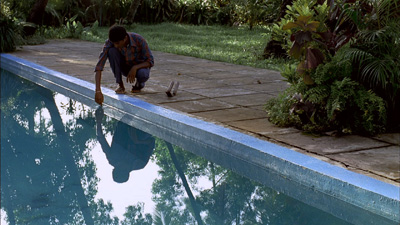
20. The Pool (Chris Smith, 2007, 67 points)
Chris Smith’s return to fiction storytelling after a decade-long sidetrack into documentary land was worth the wait and then some. Part of the magic of The Pool is that it doesn’t feel like an ethnographic exercise of an American director working in an exotic locale; it doesn’t feel like it was made by an American filmmaker, period. Though this story could have just as easily been told in small town Wisconsin, Smith’s decision to travel to India to shoot it in an unfamiliar language produces something much richer and more rewarding, a tender coming-of-age tale that will resonate with viewers no matter what language they speak. (MT) ***NOT YET AVAILABLE ON DVD***
****************************************************************************************************************************************************************

20. Funny Ha Ha (Andrew Bujalski, 2002, 67 points)
Whether or not you appreciate the films it has been lumped together with, Andrew Bujalski’s Funny Ha Ha stands on its own pigeon-toed feet as a witty, tender character study that is clearly film-history literate while remaining utterly itself. Freshman year of college, during a month of mono-mandated bed rest, I found Funny Ha Ha on the shelf at the video store and watched it three times in 24 hours, transfixed by Kate Dollenmayer’s deliciously amateur performance. I was also desperate to understand what this movie was. I rewound the ending again and again, trying to discern the film’s final marbles-in-mouth line. (Lena Dunham) ***BUY IT ON DVD***
****************************************************************************************************************************************************************
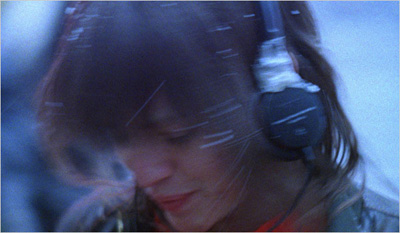
18. The Pleasure of Being Robbed (Joshua Safdie, 2008, 68 points)
I was at a film festival in Greece last month and ran into Josh Safdie. He told me about a job he recently took back home in New York, working on the crew of a corporate video, holding a boom pole all day. Many independent filmmakers are familiar with this type of temp work, and know how stultifying and creatively draining it can be—it’s dangerous, is what it is, and Josh countered it thusly: when another crew member asked him a question, he shrugged and responded in French. As far as everyone on that shoot was and is concerned, Josh Safdie is the sound guy who didn’t speak a lick of English. And that, moreso than any literal review, pretty much sums up the particular je ne sai quoi of his first feature film. (David Lowery) ***COMING SOON TO DVD***
****************************************************************************************************************************************************************

18. Afterschool (Antonio Campos, 2008, 68 points)
Directed, written and edited by Antonio Campos, and gorgeously lensed and framed by Jody Lee Lipes (recipient of this year’s Silver Nail Award), this debut feature premiered at the Cannes Film Festival to great acclaim. A dark, edgy story of a young man’s voyeuristic adventures at a privileged boarding school, Afterschool provokes a complex array of sensations in the viewer. Tough-minded and polarizing, it marks the emergence of an exciting and challenging new voice in American cinema. (Pamela Cohn) ***NOT YET AVAILABLE ON DVD***
****************************************************************************************************************************************************************
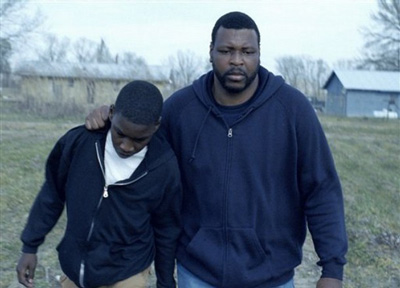
17. Ballast (Lance Hammer, 2008, 78 points)
When Lance Hammer’s debut feature premiered in competition at the 2008 Sundance Film Festival, it felt like a master had accidentally walked into a roomful of rookies. Shot on handheld 35mm using available light by cinematographer Lol Crawley, Ballast is an authentic and grittily poetic drama about one family’s grieving process during a gray, bleak Mississippi Delta winter. And while Hammer pays as much attention to the somber aura of the landscape as he does his melancholy narrative, Ballast ultimately reveals itself to be a hopeful tale of reconciliation. (MT) ***BUY IT ON DVD OR BLU-RAY***
****************************************************************************************************************************************************************
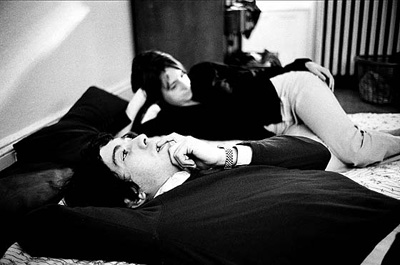
16. Mutual Appreciation (Andrew Bujalski, 2005, 79 points)
Andrew Bujalski’s follow-up to Funny Ha Ha gets funnier, warmer, and deeper every time you see it. The long mid-film back-to-back parties sequence, which has little to do with the official “plot”, first seems like a pointless digression; in fact, it reveals itself to be the heart of the film in terms of character, structure, and theme. Mutual Appreciation isn’t just a comedy about the romantic entanglements of men and women. It’s a probing examination of gender identity, self-identity, and how we define and present ourselves to the world. (Tom Russell) ***BUY IT ON DVD***
****************************************************************************************************************************************************************
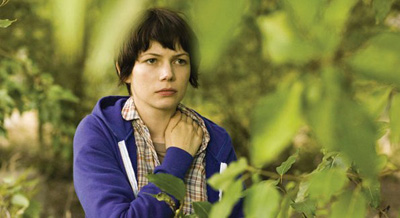
14. Wendy and Lucy (Kelly Reichardt, 2008, 81 points)
Kelly Reichardt followed up Old Joy, her lyrical Northwest bromance, with a different kind of love story: Wendy and Lucy chronicles the star-crossed connection between a boyish drifter and her sand-colored mutt. A timely meditation on the tiny injustices that conspire to send a person off the map and into poverty, Wendy and Lucy is heartbreaking in its modesty as we follow Wendy’s wordless descent. And who needs dialogue since Michelle Williams, all tattered shorts and lank, greasy bowl cut, can get the job done using only her eyes. (LD) ***BUY IT ON DVD***
****************************************************************************************************************************************************************
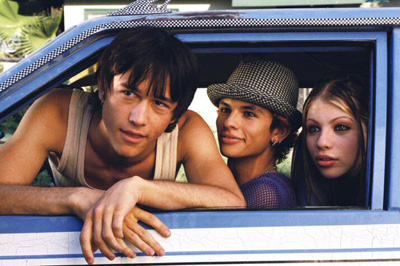
14. Mysterious Skin (Gregg Araki, 2004, 81 points)
Once in while, just when you think you’ve got a filmmaker figured out, he blows you away with a completely different turn. Who would have thought that the flip, cinematically casual director of The Doom Generation was capable of bringing actual tears to my eyes through a straightforward story of a dreamer and a fighter facing off against the cruel world? Mysterious Skin is proof that as filmmakers get older they can actually become better artists, once they live through and move on past their youthful flash. Beautiful, smart, stunning things can actually come out of a wizened middle age. (Mike S. Ryan) ***BUY IT ON DVD***
****************************************************************************************************************************************************************
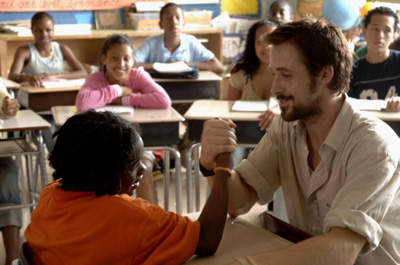
13. Half Nelson (Ryan Fleck, 2006, 82 points)
Written by the dynamic duo Ryan Fleck and Anna Boden, Half Nelson tells the story of an inner-city junior high school teacher with a bad drug habit (the superb Ryan Gosling, in an Oscar-nominated role) and the unlikely friendship that blossoms when one of his students discovers his secret (Shareeka Epps, in a real head-turning performance). As directed by Fleck and edited by Boden (who has some of the best cutting instincts around), the film achieves a thrilling level of emotional intensity. Audiences were buzzing about it after its premiere at the 2006 Sundance Film Festival, and it received the same attention when it was released theatrically in August of that same year. (PC) ***BUY IT ON DVD***
****************************************************************************************************************************************************************
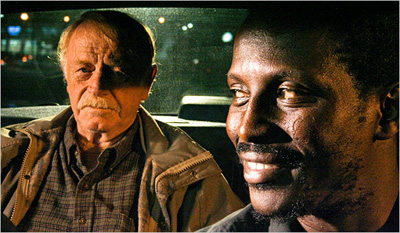
12. Goodbye Solo (Ramin Bahrani, 2008, 87 points)
After making a name for himself as a New York City filmmaker with the critically acclaimed social realist dramas Man Push Cart and Chop Shop, Ramin Bahrani returned to his small town roots for his third feature. Though the backdrop might have changed, Bahrani’s devotion to characters that have been otherwise marginalized by society did not. In Winston-Salem, North Carolina, Solo, a Senegalese cab driver, and William, a despondent Southerner, forge an unlikely bond when Solo catches on to William’s plan to take his own life. By the time Goodbye Solo reaches its quietly transcendent climax, Bahrani has shown us, with great skill and care, a profoundly humane vision of a New America. (MT) ***BUY IT ON DVD***
****************************************************************************************************************************************************************
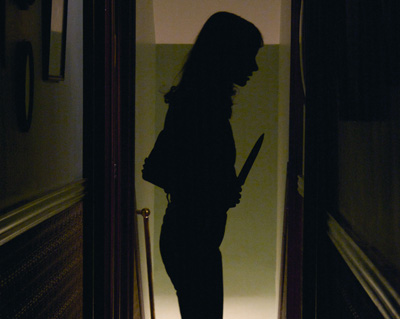
11. The House of the Devil (Ti West, 2009, 94 points)
A zoom lens is a tricky thing. It brings its subject into variable perspective, but on a different visual plane than, say, a dolly, which moves the camera through physical space. A zoom lens has nothing to do with space; rather, it’s about discernment. It allows a director to control what part of an image the audience is looking at without actually changing the intrinsic nature of that image, to tell us what to focus on in the same way our own consciousness tells our eyes what to we want to pay attention to in everyday life. In short, it’s a tool of manipulation. With The House of the Devil, so full of zoom ins and zoom outs that—along with the ’80s couture and Satan-worshipping antagonists that fill the frame—never tip the film into cheesy territory, Ti West reveals himself as a master manipulator. This is great horror filmmaking, and great filmmaking, period. (DL) ***COMING SOON TO DVD AND BLU-RAY***
****************************************************************************************************************************************************************
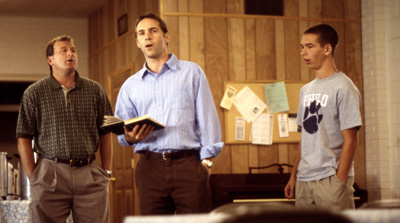
10. Junebug (Phil Morrison, 2005, 97 points)
It’s been four and a half years since I first saw Phil Morrison’s Junebug. I’ve probably watched it another ten times since then. No other film captures, in such a subtle, humorous and heartbreaking way, the central fissures of American life in the first decade of the 21st century. How to reconcile the urban with the rural, the halfheartedly Progressive with the uncompromisingly Conservative, our doubts with our faith? Is there any salve for the cultural alienation that grows between family members in vastly different social and professional spheres? How do we go home again? Junebug is a truly special film. (Note: Props to HTN contributor Mike S. Ryan for being a part of this masterpiece!) (Brandon Harris) ***BUY IT ON DVD***
****************************************************************************************************************************************************************
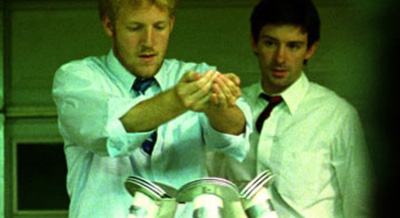
9. Primer (Shane Carruth, 2004, 99 points)
Made for the price of a good used car and with enough ingenuity to fuel ten films, Shane Carruth’s surprise Sundance winner came out of nowhere and disappeared just as fast. Not like anyone was going to figure out how to market this heady little DIY time travel movie to the masses, but in Primer we find the conceptual vision that’s missing from so many indie films made for ten and a hundred and a thousand times as much. You might need an advanced degree in Physics to wrap your head around Carruth’s narrative about the spiritual implications of metaphysical doubling, accidentally discovering how to go backwards in time in your garage, and ultimately—and most troublingly—how ethics so often get pushed aside in the name of progress. This is part of the fun. To embrace Primer’s endless complexity is to give in to its essential charm and its great gift. If you seek to be pacified and reassured, walk through another door. (BH) ***BUY IT ON DVD***
****************************************************************************************************************************************************************
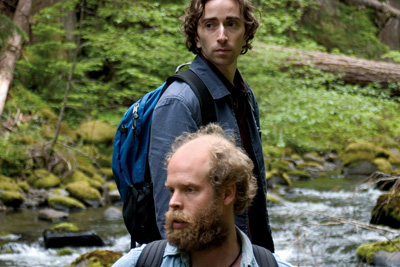
8. Old Joy (Kelly Reichardt, 2006, 104 points)
Kelly Reichardt perfected her personal craft of short story filmmaking with Old Joy, a minimalist portrait of a weekend camping trip shared by two 30-somethings in the Pacific Northwest. As the reunited friends amble through a misted wood, the constant, brooding tension between the two signals their painful realization of an imminent rupture. What ultimately makes Old Joy so complex and beautiful is what simmers beneath the surface, as each man—suffering from the political apathy of leftist America—searches in vain for the shadow of a past self who would certainly know how to connect to the other. (HH) ***BUY IT ON DVD***
****************************************************************************************************************************************************************
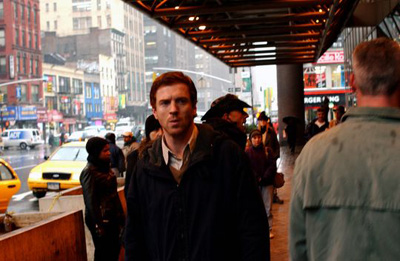
7. Keane (Lodge Kerrigan, 2004, 105 points)
A man passes through the Port Authority. A stranger, calling out, “Excuse me sir, have you seen this girl? This is my daughter…” No one seems to find the time to listen to, or even hear, the question. The crowd passes him by. Millions of eyes staring at him, voices thousands and nameless and muttering. Searching with all of them echoing within him. She will not appear. His thoughts so loud we can hear them ourselves. His family name, repeated: “My name is Keane. Keane. K – E – A – N – E…” We say it with him. Was she real? Could she still be breathing? If she was a dream, then wherever she is she must know: she may as well have never existed at all, save for him. It is no dream. (Evan Louison) ***BUY IT ON DVD***
****************************************************************************************************************************************************************

6. Momma’s Man (Azazel Jacobs, 2008, 109 points)
Just when you thought the overgrown-child-returns-home genre had officially worn out its welcome, along comes Azazel Jacobs to inject it with a breathtaking amount of heart. More than just an understated comic portrait of a new husband and father’s temporary quarter-life crisis, Momma’s Man is also a deeply touching love letter to Jacobs’ parents (painter Flo and experimental filmmaker Ken, who act in the film), their staggeringly jam-packed Tribeca loft, and a fading New York City spirit. This, my friends, is how you make the personal universal, how you turn your own little life into a work of gracious art. (MT) ***BUY IT ON DVD***
****************************************************************************************************************************************************************
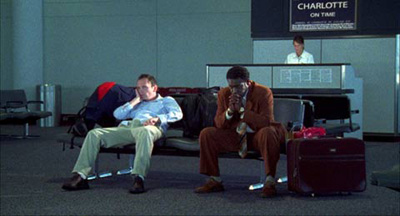
5. Great World of Sound (Craig Zobel, 2007, 115 points)
Craig Zobel’s Great World of Sound is a perceptive yet human—and often humorous—look at contemporary American culture and its exploitation of talent and hope. Pat Healy and Kene Holiday are con-artist record producers, scoping the American landscape for naïve souls looking for their big break (something all too common in the world of modern television). What makes the film so special isn’t just Healy and Holiday’s revelations or their sobering taste of reality, but those wonderful, endearing documentary clips of real people auditioning, whose talent and charm give the film a necessary dose of optimism. (Cullen Gallagher) ***BUY IT ON DVD***
****************************************************************************************************************************************************************
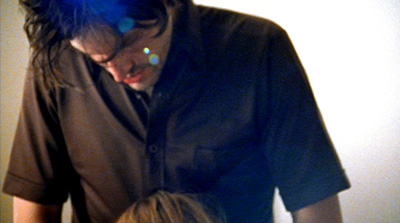
4. The Brown Bunny (Vincent Gallo, 2003, 116 points)
Miles down the road and all I need is a heaven. A place to go where I can really be. Ghosts appear like flowers from dirt. Forget all of her, leave memories behind, before they made me run. No matter how hard I try, I know if I stop for too long, I’ll remember her: Someone I lost, back there, and keep losing, over and over again. Try to keep it from happening again and again but I can’t. The windshield and the rain, the heat on the highway. Desert plain of the horizon. The road ahead of me, strangers with names the same as flowers. They remind me we all have to wilt and die like the rest of it. Trying to keep going but I’m alone. Afraid of never knowing where to stop. And it just goes on. (EL) ***BUY IT ON DVD***
****************************************************************************************************************************************************************
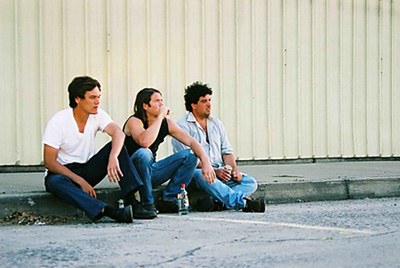
3. Shotgun Stories (Jeff Nichols, 2007, 132 points)
As a firm believer in the concept that more money doesn’t bring better films, Shotgun Stories stands as the penultimate example of how classical brilliance is attainable on a no/low budget. The writing and directing here announces a talent so immense that one can only scratch one’s head in bewilderment as to why Jeff Nichols hasn’t yet directed a studio picture. Blame it perhaps on a don’t-give-a-damn agent (CAA) or perhaps the bad advice of friends, but can someone please give this man some material—his is a talent that far surpasses his peers. (MR) ***BUY IT ON DVD***
****************************************************************************************************************************************************************
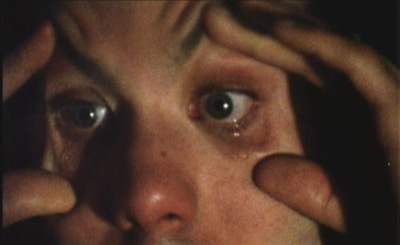
2. Frownland (Ronald Bronstein, 2007, 152 points)
Emerson defined genius as having the courage to declare that “what is true for you in your private heart is true for all men.” By that standard, Ronald Bronstein’s bleakly hilarious debut feature is manifestly a work of genius. Here is a movie for the troll lurking inside all of us, the little monster that tells us we’re ugly, doomed to failure, and undeserving of love or mercy. If we’re lucky, that inner voice takes up only a small percentage of our headspace, a small amount of the time, and quiets down as we age. Frownland cranks up the volume on that voice until it drowns out every other sound in the room. This is a challenging, often aggressively unpleasant, but strangely exhilarating viewing experience, and a triumph of DIY filmmaking. (NK) ***BUY IT ON DVD***
****************************************************************************************************************************************************************
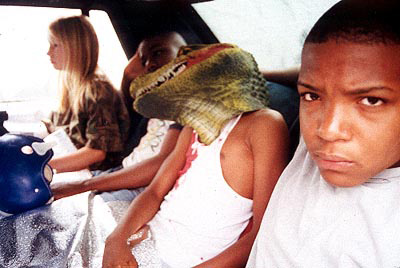
1. George Washington (David Gordon Green, 2000, 158 points)
Summer is fleeting, yet the days last forever… A reticent, rural symphony, David Gordon Green’s George Washington strikes that rare tonal balance between location, character, and story. Led by a strong ensemble cast and Tim Orr’s opulent yet naturalistic photography, the film evocatively captures the rich atmosphere of the North Carolina countryside over the course of a summer. Comparisons to Terrence Malick’s Days of Heaven (and, in turn, Nestor Almendros and Haskell Wexler’s cinematography) only reinforce the impact the film has made, and the stature it has attained, since its release in 2000. (CG) ***BUY IT ON DVD***
****************************************************************************************************************************************************************
(Contributors: Pamela Cohn, Lena Dunham, Cullen Gallagher, Tom Hall, Brandon Harris, Ted Hope, Holly Herrick, Nelson Kim, Evan Louison, David Lowery, Mike S. Ryan, Michael Tully)

